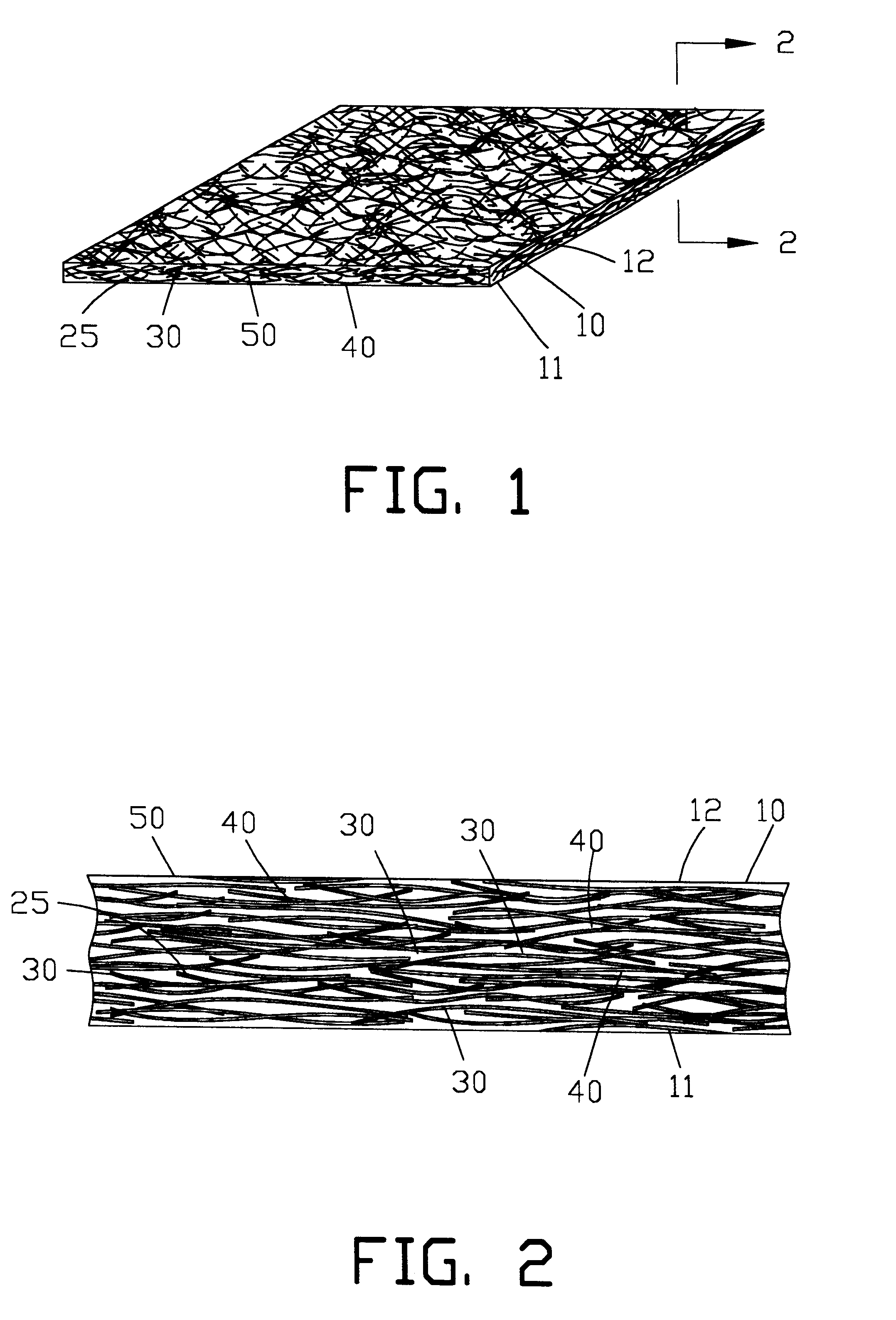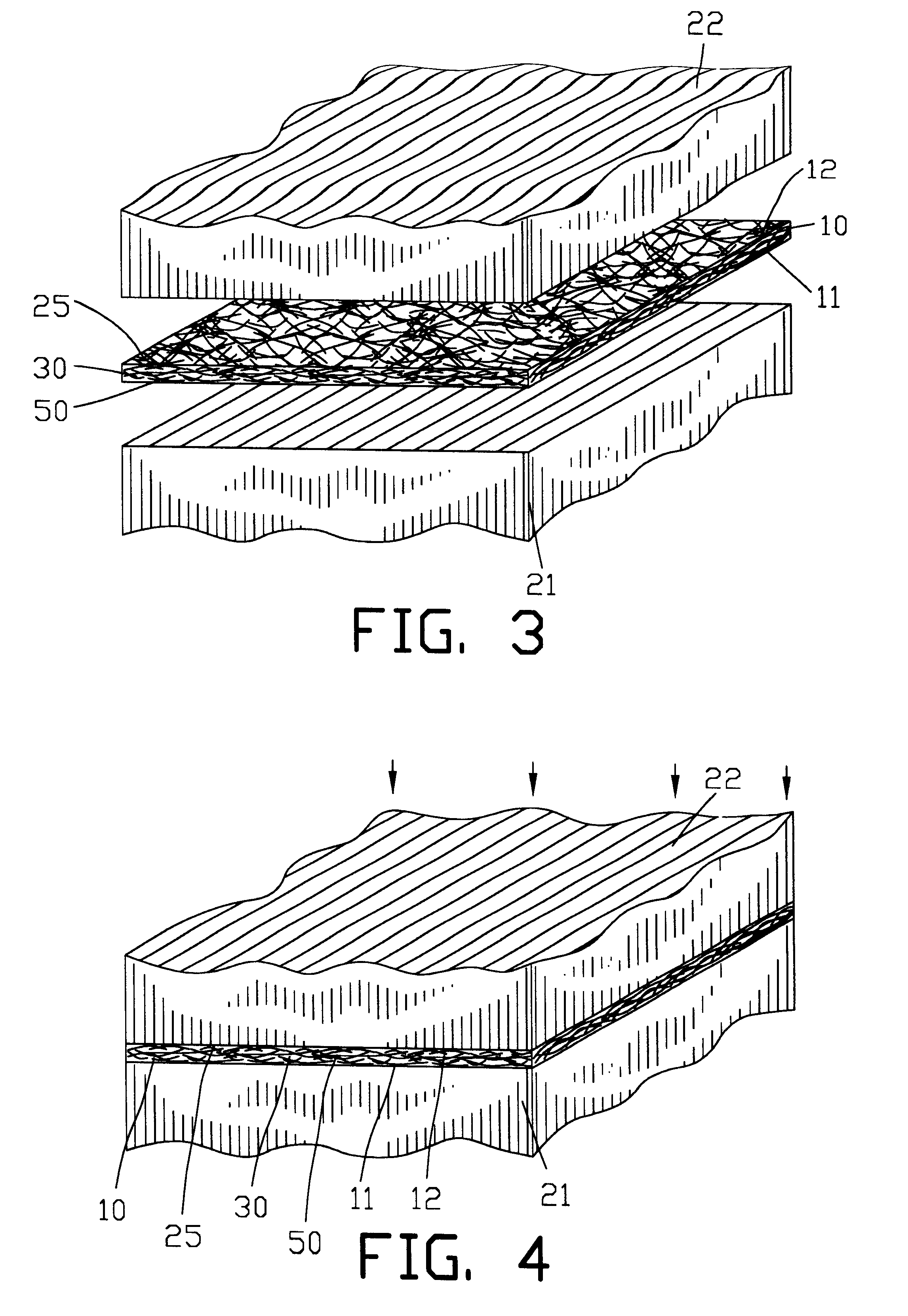Process for bonding workpieces
a technology for workpieces and bonding materials, applied in separation processes, lighting and heating apparatuses, furnaces, etc., can solve the problems of deformation or partial melting or liquefaction of a portion, and the bond strength is not sufficient for many operations and uses
- Summary
- Abstract
- Description
- Claims
- Application Information
AI Technical Summary
Benefits of technology
Problems solved by technology
Method used
Image
Examples
Embodiment Construction
FIG. 1 is an isometric view of the bonding pad 10 of the present invention. The bonding pad 10 of the present invention defines a first side 11 and a second side 12. The bonding pad 10 is adapted for bonding a first workpiece 21 to a second workpiece 22 shown in FIGS. 3-6.
The first and second workpieces 21 and 22 may be metallic workpieces, ceramic workpieces or any other type of workpiece that is capable of accommodating a high temperature. In this example of the invention, the first and second workpieces 21 and 22 are shown as solid metallic workpieces.
FIG. 2 is a magnified sectional view along line 2--2 in FIG. 1. The bonding pad 10 comprises a matrix 25 of metallic fibers 30. The matrix 25 of metallic fibers 30 are substantially randomly oriented in at least one geometric plane shown as a horizontal plane in FIG. 2.
Preferably, each of the metallic fibers 30 is substantially cylindrical having a cylindrical outer surface 40. The metallic fibers 30 may be formed in a wire drawing ...
PUM
| Property | Measurement | Unit |
|---|---|---|
| diameter | aaaaa | aaaaa |
| length | aaaaa | aaaaa |
| length | aaaaa | aaaaa |
Abstract
Description
Claims
Application Information
 Login to View More
Login to View More - R&D
- Intellectual Property
- Life Sciences
- Materials
- Tech Scout
- Unparalleled Data Quality
- Higher Quality Content
- 60% Fewer Hallucinations
Browse by: Latest US Patents, China's latest patents, Technical Efficacy Thesaurus, Application Domain, Technology Topic, Popular Technical Reports.
© 2025 PatSnap. All rights reserved.Legal|Privacy policy|Modern Slavery Act Transparency Statement|Sitemap|About US| Contact US: help@patsnap.com



